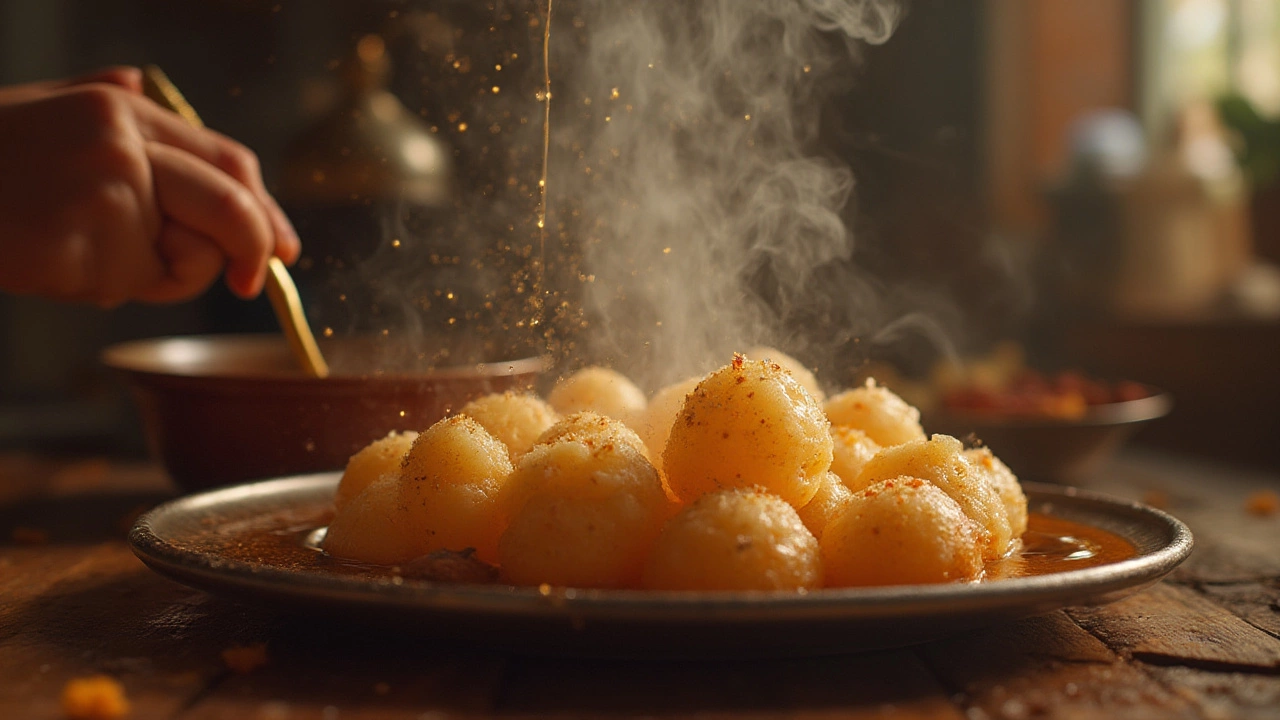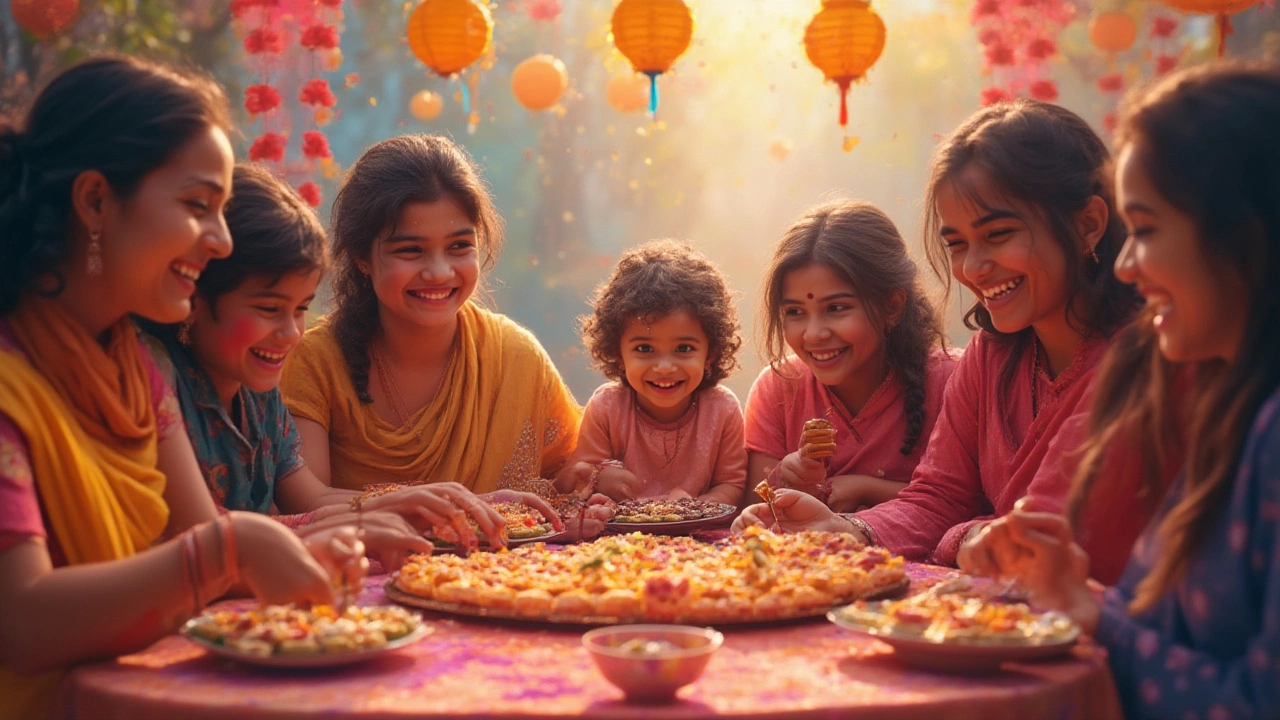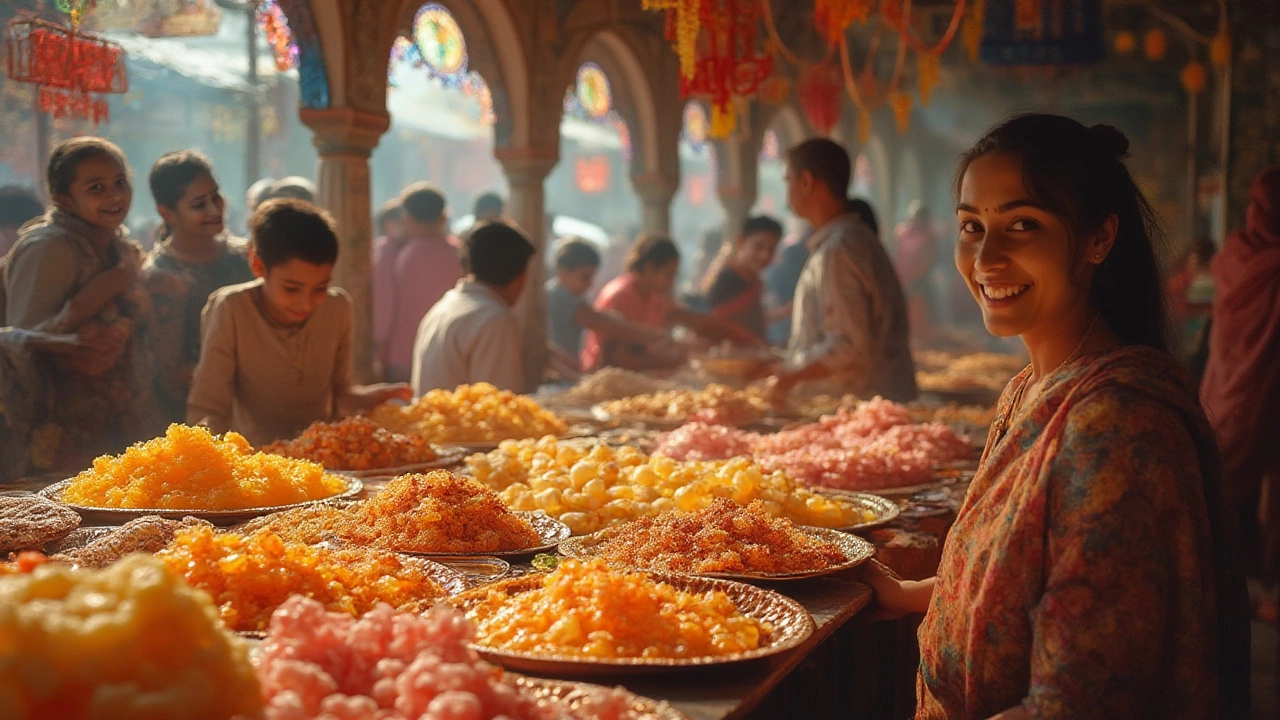Picture yourself on a crowded street in Kolkata: the clang of rickshaw bells, the honking of scooters, and the thick, sweet smell of sugar syrup swirling in the air. Sweet shops there are packed from morning till night. In Delhi, queues snake outside for just a single bite of gulab jamun. Across the country, weddings, birthdays, any happy occasion isn’t truly celebrated until a plate of sweets—called mithai in Hindi—has made the rounds. But if you have to name just one sweet that stands above the rest in India, which would it be? The hunt for India’s most popular sweet is fierce, full of regional pride, nostalgic memories, and more than a little friendly debate.
The Legends: Rasgulla, Gulab Jamun, and Jalebi
Let’s get straight to the drama: it almost always comes down to three big names. Rasgulla, gulab jamun, and jalebi. Sure, there are hundreds of Indian sweets (barfi, peda, soan papdi, and sandesh fans—I see you) but year after year, these three keep popping up at the top in polls and food studies. Their stories are as colorful as their tastes.
First up, rasgulla. Soft white cheese balls—actually made of chenna, a kind of fresh cottage cheese—dunked in clear, lightly floral sugar syrup. Ask anyone raised in West Bengal or Odisha which sweet they claim as their own and you’ll stir up a centuries-old rivalry. Each state swears it invented the rasgulla, launching festivals, passionate editorials, and even lawsuits to prove it. The Geographical Indication (GI) tag, meant to honor local food heritage, was granted first to Bengal (for “Banglar Rasogolla”) and then to Odisha (for “Odisha Rasagolla”).
Then there’s gulab jamun. Imagine little brown dough balls, deep-fried until golden, then soaked in saffron and cardamom infused syrup until they become melting, pillow-soft spheres. The name itself is a blend of Persian words: ‘gulab’ meaning rose-water and 'jamun' because the finished dumplings resemble the dark purple Indian berry. Persian, Central Asian, and Indian influences all swirled together to create this treat, tracing roots back to medieval Mughal kitchens. Every restaurant menu, festival, even school function lunch boxes sometimes, you’ll find gulab jamun trying to tempt you.
Finally, there’s jalebi: bright orange, sticky-sweet spirals swirling around themselves like edible jewelry. Hot oil gives them crunch, then they’re dunked in a sugar bath until the insides stay a bit chewy while the edges go crisp. The earliest reference to jalebi in India goes way back to the 15th century; it apparently came from the West, possibly Persia, and quickly became a favorite because it’s easy to make in bulk and looks like a celebration on a plate.
To give you a sense of just how much these sweets matter to people, here’s a stat that says it all: according to a 2023 survey by Zomato and Swiggy (India's two food delivery giants), during festive seasons, orders for gulab jamun and rasgulla soared past 10 million across metros in a single week. Regional rankings shift, but these legends always claim most of the clicks, likes, and forkfuls.
| Sweet Name | Main Ingredients | Region Most Popular | Festivals/Occasions | 2023 Festive Orders (Swiggy/Zomato, millions) |
|---|---|---|---|---|
| Rasgulla | Chenna (fresh paneer), sugar | West Bengal, Odisha | Durga Puja, birthdays, weddings | 4.2 |
| Gulab Jamun | Khoa (reduced milk), flour, sugar, cardamom | North India, all over | Diwali, Eid, all celebrations | 5.7 |
| Jalebi | Maida (refined flour), yogurt, sugar, saffron | Madhya Pradesh, Uttar Pradesh, Gujarat | Independence Day, Ramadan, weddings | 3.1 |
Still, here’s where it gets juicy. Each state will swear their favorite is unbeatable, but the sweet that truly crosses geography, class, and generation more than any other is probably gulab jamun. Why? It adapts to every climate, lives happily in both high-end boxes and humble sweet shop platters, and its melting texture wins people over from the very first taste. Even at birthdays in the UK, USA, or Middle East where Indian families have made new homes, gulab jamun is the sweet that shows up first. It’s a cultural bridge, as likely to be given as a thank you as it is to be eaten for pure pleasure. So, if you’re asking which is “the” most popular sweet—the winner in sheer numbers and affection is gulab jamun, with rasgulla close behind and jalebi pulling up the rear in festive seasons.

Sweet Traditions: A Bite of Culture
Mithai isn’t just sugar, spice, and nostalgia—it’s woven right into the story of India itself. You can’t separate sweets from Indian culture. Every region, language, even every festival stamps its own magic onto the mithai menu. And if you think Indian sweets are all the same sugary stuff with different shapes, you’re in for a surprise.
Start with the sheer variety. If there’s a vegetable or dairy product, Indians have probably turned it into a dessert. Bengal’s sandesh uses paneer mixed with sugar and cardamom, shaped into intricate flowers or hearts. Mysore Pak from Karnataka is basically fudge made with gram flour and clarified butter—but it literally melts into gooey sweetness on your tongue. In the north, a winter specialty called gajar ka halwa transforms carrots, milk, and ghee into a sticky orange delight. Traveling west, you’ll meet the bite-sized peda from Mathura, milk powder and sugar kneaded with a touch of cardamom. Down south, payasam is a creamy pudding starring rice, lentils, or vermicelli, cooked with coconut milk and jaggery.
But sweets go way beyond taste buds. In India, giving sweets means you’re sharing good fortune and happiness. No wedding invitation or Diwali gift is complete unless you tuck in a pretty box of sweets. New parents hand out laddoos or barfis to announce a baby’s arrival. During Holi, shops stack up gujiyas—pastry pockets stuffed with khoya and nuts—until the trays look like little golden mountains.
Ever wondered how much work goes into making these? Traditional sweet makers are called halwais. For many, it’s a family business stretching back generations, with recipes passed down like treasure. Halwais wake up before dawn to start boiling milk for hours to get just the right creamy texture for barfi or peda. Some places, like Bhim Nag’s in Kolkata (founded in 1826), aren’t just selling treats—they’re local legends. Even celebrities, presidents, and foreign guests get sweets couriered to their hotels from the city’s most famous shops. Want to taste history? Drop by a century-old mithai shop in Varanasi, Kolkata, or Mumbai. You’ll get a bite of the past, wrapped in ghee and gold leaf.
What about home cooks? Families each have their mithai secrets—recipes scribbled in notebooks, whispered down from grandmothers, always with a firm warning: "Never skimp on the ghee." During certain festivals, groups of neighbors gather to make sweets together, rolling laddoos or frying up jalebis by the dozen, laughing and sharing family news as they go. Even today, YouTube channels and Instagram are full of home cooks exploring the magic of Indian desserts with quick microwave hacks or health-conscious twists (like jaggery instead of sugar, or oat flour in place of maida). Sweets keep evolving, but their role at the center of celebration never fades.
One more sweet tradition? “Meetha khana”—literally, eating something sweet before heading out for anything important. Whether you’re taking an exam, a job interview, or even just running a risky errand, someone will hand you a piece of mithai for good luck. That’s the magic: sweets aren’t just a food, they’re a wish for happiness and success, in every sticky, fragrant bite.

How to Choose, Enjoy, and Make Indian Sweets
Navigating the rainbow world of Indian sweets can feel overwhelming if you’re new to it, but there are easy ways to get the most out of these tempting treats. Whether you’re traveling, shopping for a festival, or trying to whip up mithai at home, some practical tips can help make your sweet experience even better.
- Buy fresh—or make it yourself! Most Indian sweets don’t contain preservatives, so they’re freshest eaten the day they’re made. If you’re at a sweet shop, ask what was made that morning. For festivals, pre-order a day or two in advance so you don’t end up with dried-out barfi or limp jalebi.
- Watch your shelf life: Gulab jamun and rasgulla usually last 2-3 days in the fridge. Jalebi is best hot and fresh, but you can warm slightly in the oven for a day-old crunch.
- Pair like a pro: Hot jalebi with cold, thick buffalo-milk yogurt is one of north India’s best-kept breakfast secrets. Another classic is serving rasgulla chilled, especially during summers, for a super refreshing treat. And don’t miss gulab jamun with a scoop of vanilla ice cream—trust me.
- Go regional for something new: If you’re traveling, always ask for the local house special. Petha in Agra (made from ash gourd), chikki in Lonavala (a peanut brittle), or payasam in Kerala—each place has its own signature.
- Health hacks: Most mithai is high in sugar and ghee, but you can make lighter versions at home with dates, jaggery, low-fat milk, or nuts replacing part of the sugar or fat.
Want to try your hand at making the most popular Indian sweet? Here’s a simple home gulab jamun recipe that skips the long hours and gives you mouth-melting results:
- Mix 1 cup milk powder, 1/4 cup all-purpose flour, and a pinch of baking soda. Stir in 1 tablespoon ghee and just enough milk (about 1/4 cup) to make a soft dough.
- Roll into smooth, crack-free balls, slightly smaller than a walnut.
- Heat oil or ghee over low-medium heat; fry gently until the balls turn golden brown (don’t rush this part!).
- Meanwhile, dissolve 1 cup sugar in 2 cups water, add 4 crushed cardamom pods and a splash of rose water. Simmer 5-7 minutes for a light syrup.
- Soak fried balls in syrup for at least an hour. Serve warm or cold—you choose!
One last tip: if you’re buying gifts, sweet shops will often pack sweets in decorative boxes with little ice packs or dry fruits added for fun. Pick up a mixed box so you can taste several varieties, or ask for “assorted mithai”—you’ll get a tour through India’s dessert culture, one bite at a time. And the best part? No matter which sweet you try—rasgulla, jalebi, gulab jamun, or some surprise favorite you’ve never heard of—you’re not just tasting sugar. You’re tasting hundreds of years of stories, celebrations, and a whole country’s way of saying, “Life is good. Have another bite.”
